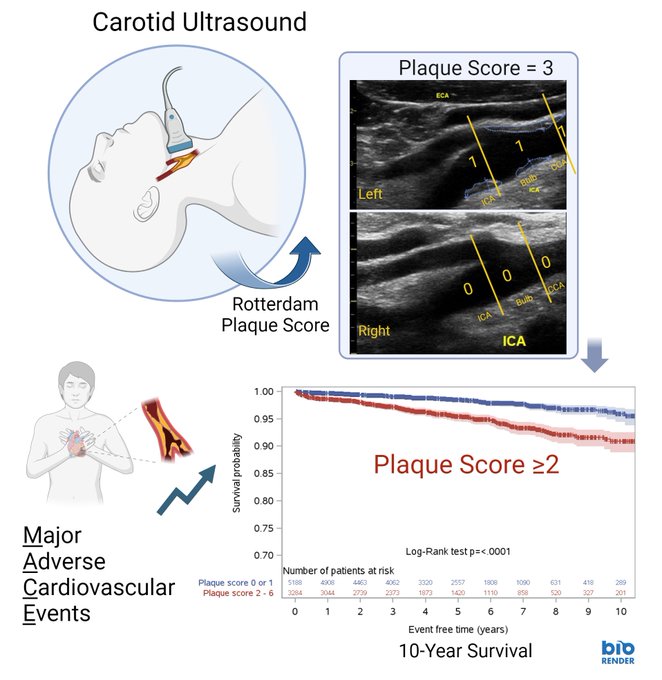Murray F Matangi , Marie-France Hétu , David W J Armstrong , Jonas Shellenberger , Daniel Brouillard , Josh Baker , Ana Johnson , Nicholas Grubic , Hannah Willms , Amer M Johri
Abstract
Aims
Atherosclerotic carotid plaque assessments have not been integrated into routine clinical practice due to the time-consuming nature of both imaging and measurements. Plaque score, Rotterdam method, is simple, quick, and only requires 4–6 B-mode ultrasound images. The aim was to assess the benefit of plaque score in a community cardiology clinic to identify patients at risk for major adverse cardiovascular events (MACE).
Methods and results
Patients ≥ 40 years presenting for risk assessment were given a carotid ultrasound. Exclusions included a history of vascular disease or MACE and being >75 years. Kaplan–Meier curves and hazard ratios were performed. The left and right common carotid artery (CCA), bulb, and internal carotid artery were given 1 point per segment if plaque was present (plaque scores 0–6). Administrative data holdings at ICES were used for 10-year event follow-up. Of 8472 patients, 60% were females (n = 5121). Plaque was more prevalent in males (64% vs. 53.9%; P < 0.0001). The 10-year MACE cumulative incidence estimate was 6.37% with 276 events (males 6.9% vs. females 6.0%; P = 0.004). Having both maximal CCA intima media thickness < 1.00 mm and plaque score = 0 was associated with less events. A plaque score < 2 was associated with a low 10-year event rate (4.1%) compared with 2–4 (8.7%) and 5–6 (20%).
Conclusion
A plaque score ≥ 2 can re-stratify low–intermediate risk patients to a higher risk for events. Plaque score may be used as a quick assessment in a cardiology office to guide treatment management of patients.
https://academic.oup.com/ehjcimaging/article/26/4/714/7705860?login=false

